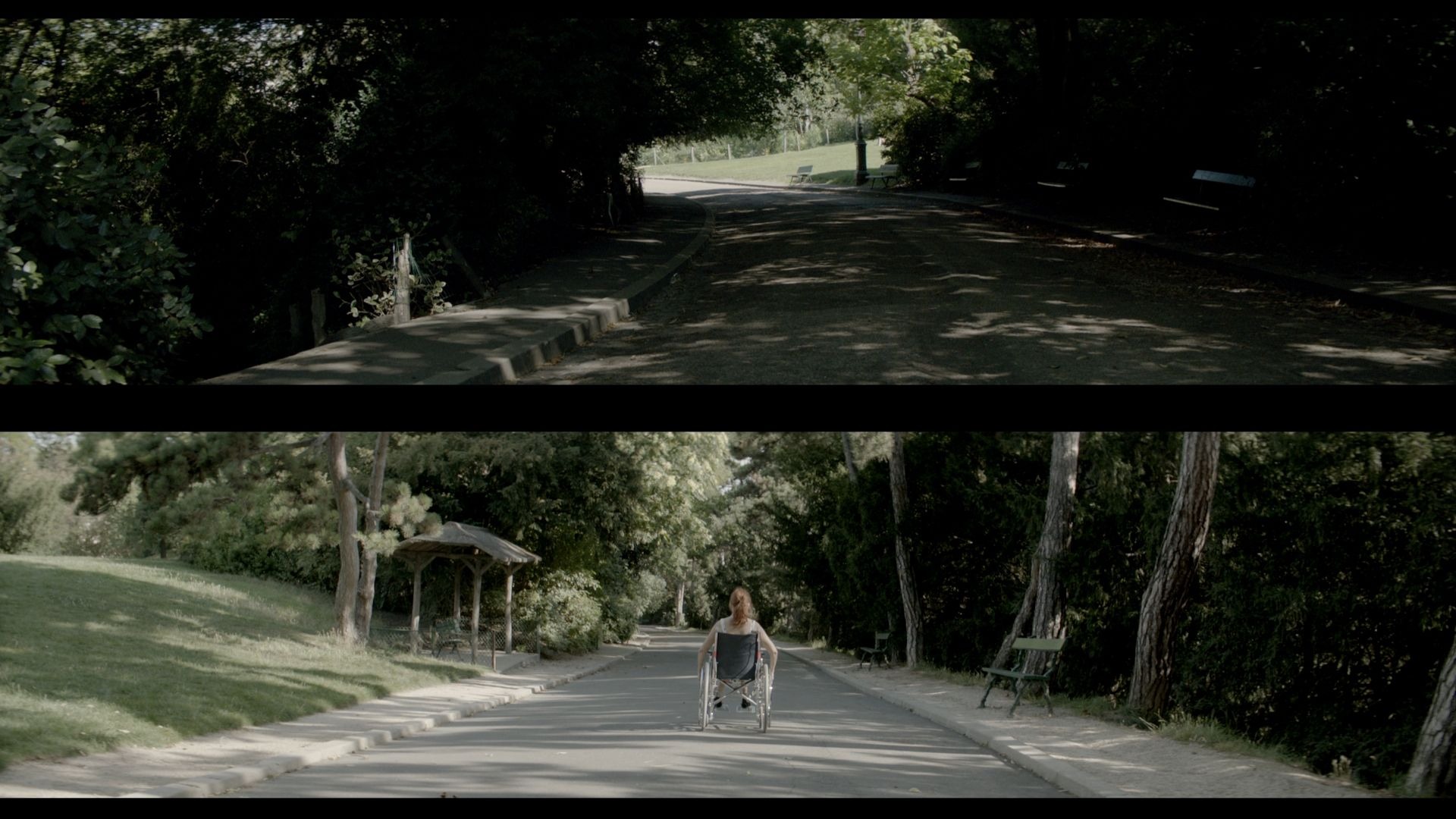Jesper Just
This Nameless Spectacle
04 Jul - 20 Oct 2019
JESPER JUST
This Nameless Spectacle
4 July - 20 October 2019
Curator: Manuel Cirauqui
Jesper Just (Copenhagen, 1974) is known internationally for his utilization of major cinematic formats and his ambition to rethink, visually and physically, the logic of moving pictures. Exploring concepts that are closely related to the cultural tradition of the film industry, from voyeurism to urban life and gender conflicts, Just’s work resituates images in an expanded framework and gives them a quasi-architectural status, underlining their social power.
The two-channel video installationThis Nameless Spectacle (2011) borrows its title American writer William Carlos Williams, who praised in his poem “The Right of Way” the fascinating beauty of ordinary life events—the “nameless spectacle” of unremarked phenomena occurring anytime in a place like any other. If looked at closely, these trivial facts can convey a disarming beauty, a deeply troubling enigma, or a forgotten truth. Just’s film, split in two parallel time flows and two monumental screens facing each other, offers a dramatic act that is hard to account for—a hypothetic chain of causes and effects allowing us only to guess potential connections. Two characters with overlapping itineraries exchange gazes in the streets of the Parisian neighborhood of Buttes-Chaumont Park. Their mutual scrutiny repeats as they look through the opposite windows of their apartments, until one of them suffers a breakdown whose cause may be located in the very act of looking or being looked at, or perhaps in the sun’s reflection. The ambiguousness of this event is intensified by that of the film’s main character, the transgender actress and singer Marie-France Garcia.
By means of a double panoramic device, Just’s work sheds light on the forms of modern urbanism as well as the history of the cinematic eye, playing with the equivalence of ocular movement and the camera’s panning shot. Likewise, it emphasizes the existing glitches between the audience’s vision and images themselves, as though they were pieces of an incomplete jigsaw. The minimal story contrasts with its near Hitchcockian dramatism, while the lack of words or description of the action matches the anonymity of its protagonists.
This Nameless Spectacle
4 July - 20 October 2019
Curator: Manuel Cirauqui
Jesper Just (Copenhagen, 1974) is known internationally for his utilization of major cinematic formats and his ambition to rethink, visually and physically, the logic of moving pictures. Exploring concepts that are closely related to the cultural tradition of the film industry, from voyeurism to urban life and gender conflicts, Just’s work resituates images in an expanded framework and gives them a quasi-architectural status, underlining their social power.
The two-channel video installationThis Nameless Spectacle (2011) borrows its title American writer William Carlos Williams, who praised in his poem “The Right of Way” the fascinating beauty of ordinary life events—the “nameless spectacle” of unremarked phenomena occurring anytime in a place like any other. If looked at closely, these trivial facts can convey a disarming beauty, a deeply troubling enigma, or a forgotten truth. Just’s film, split in two parallel time flows and two monumental screens facing each other, offers a dramatic act that is hard to account for—a hypothetic chain of causes and effects allowing us only to guess potential connections. Two characters with overlapping itineraries exchange gazes in the streets of the Parisian neighborhood of Buttes-Chaumont Park. Their mutual scrutiny repeats as they look through the opposite windows of their apartments, until one of them suffers a breakdown whose cause may be located in the very act of looking or being looked at, or perhaps in the sun’s reflection. The ambiguousness of this event is intensified by that of the film’s main character, the transgender actress and singer Marie-France Garcia.
By means of a double panoramic device, Just’s work sheds light on the forms of modern urbanism as well as the history of the cinematic eye, playing with the equivalence of ocular movement and the camera’s panning shot. Likewise, it emphasizes the existing glitches between the audience’s vision and images themselves, as though they were pieces of an incomplete jigsaw. The minimal story contrasts with its near Hitchcockian dramatism, while the lack of words or description of the action matches the anonymity of its protagonists.

